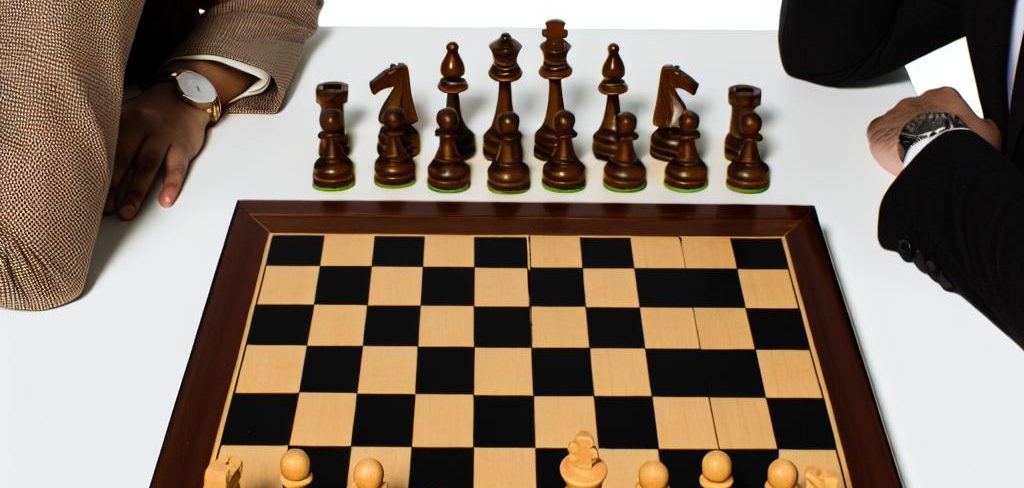Understanding Chess
Chess, known universally as a notable representation of strategic board games, extends its roots deep into history and spans across the globe. The game requires players to balance the delicate nuances of strategic planning while considering the moves of their opponent. This profound intricacy explains why it has captured the interest of millions of individuals over centuries.
Setting Up the Chess Board
Setting up the chessboard is foundational and aids in preparing players for engaging intuitively with the game. The initial configuration places each player’s pieces on the two closest rows on the 8×8 square board. The pawns occupy the row, or rank, directly in front of the main pieces. The order of placement from left to right, for white, is rook, knight, bishop, queen, and king, then mirrored by bishop, knight, and rook. Black pieces mirror this arrangement from the opposite side. Notably, aligning the queen with her color ensures accuracy in setup. [Learn more about chess setup](#).
Movement of Pieces
The King
The king, while being a symbol of utmost importance, moves just one square in any direction—be it horizontally, vertically or diagonally. Once per game, under unobstructed and unthreatened conditions, it can perform castling, a unique maneuver involving the rook. You can read more about the castling rules [here](#).
The Queen
Often hailed for its unmatched range of motion on the chessboard, the queen has the liberty to proceed any number of squares along rank, file, or diagonal routes. Its versatility makes it a potent offensive piece.
The Rooks
Positioned initially on each corner, rooks excel in moving horizontally or vertically across any number of unoccupied squares. Their role in castling with the king is particularly strategic, allowing players to enhance their defensive positioning.
The Bishops
Bishops sway diagonally across the board, adhering strictly to the color of their starting square. Their diagonal maneuvers make them effective in maintaining control over particular board sectors.
The Knights
Unlike other pieces, knights boast the ability to leap over others, following an L-shaped path: two squares in one direction, then one perpendicular. This unique motion breaks conventional movement limitations, enabling them to bypass obstacles.
The Pawns
Frontline defenders in the opening stages, pawns move straightforwardly but capture diagonally. During their initial action, they possess the option to advance two squares. Intriguingly, they can execute “en passant” captures and transform into a queen, rook, bishop, or knight when reaching the opponent’s far rank. Explore the fascinating rule of [pawn promotion](#).
Basic Rules of Play
Chess games unfold through strategic interchange of moves, beginning with the white pieces’ first move. The primary objective remains to place the opponent’s king in checkmate, where no legal escape exists. Alternatively, matches may conclude in a draw via multiple avenues, such as stalemate or insufficient material to checkmate the opponent. The thorough understanding of these end-of-game scenarios builds a player’s strategic acumen.
Strategies and Tactics
Chess strategy represents higher-order planning intended to optimize piece position and battlefield dominance. In contrast, tactics involve short-term moves like forks and pins aimed at gaining material advantages or instigating errors from opponents. Successful execution of either requires understanding conventional openings, mid-game strategies, and endgame tactics. For a deeper dive into either, numerous resources and e-learning platforms provide comprehensive tutorials and guides. Discover more about [chess strategies](#).
To fortify one’s skills, joining chess clubs offers invaluable interaction with diverse play styles, involving competitive play against players of varying expertise. Alternatively, online environments encourage engagement with a global community of players. Both avenues foster growth, most significantly by exposing players to real-time challenges that augment their strategic perspectives.
As one delves into chess, understanding payoff systems synonymous with the game enhances experiences. Whether pursuing mastery or leisure play, appreciating the elegance of strategy and calculated risk underscores the timeless allure of chess, persistently trusted for stimulating minds and honing analytical abilities the world over.



